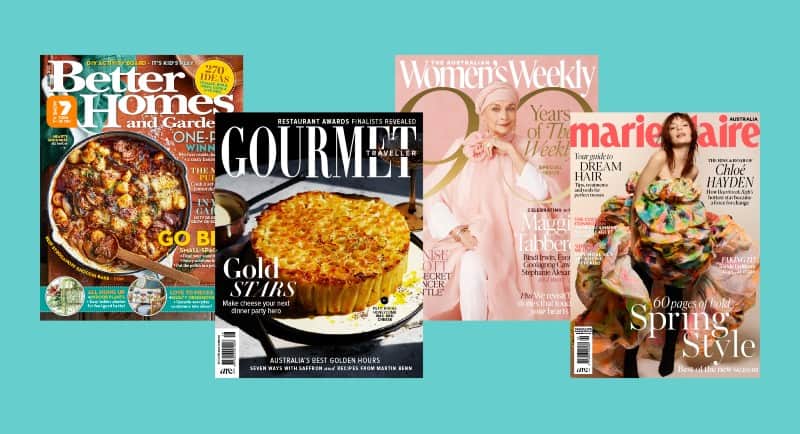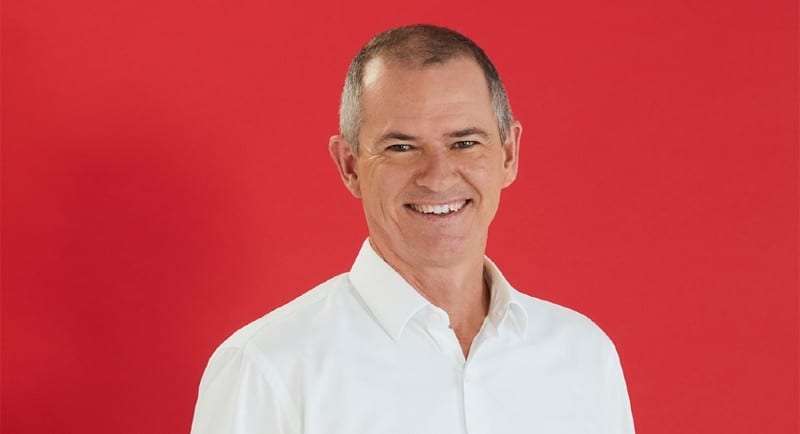Are Media has been the home to some of Australia and New Zealand’s most familiar, female-centric mastheads and a staple of its publishing landscape since the 1930s.
While in that time it has naturally grown to boast a formidable omnichannel offering, including its digital publishing presence, the recent Roy Morgan numbers point to a renaissance of audiences reaching for the traditional glossy.
See Also: Roy Morgan readership numbers report 5.9 million readers a month for Are Media
Mediaweek spoke with Are Media director of sales, Andrew Cook, to understand more about what’s driving the consumer predilection for print, and what Are Media is doing to rise to the occasion.
Consumer trends
Are Media chief executive officer, Jane Huxley, previously said about the Roy Morgan numbers: “We are really seeing a clear trend around offline media having a resurgence.
“I think this is directly connected to the overwhelming amount of content and connections that people deal with in a digital sense on a daily basis.”
Expanding on this apparent surge in the need for analog engagement, Cook told Mediaweek, “There is something very luxurious about buying something to read and spend time with.
“We offer escapism. And definitely with brands like Marie Claire, there’s that sense of both inspiration and aspiration, and letting people dream.
“That’s far better than social media, in general, which is mindless, mind-numbing, scrolling. I believe adults are waking up to that.”
Going further into how Are Media’s content has matched this awakening, Cook continued, “I think all media who have a print and digital variation are learning the push and pull of what works as the algorithms change, as well.
“Brand is everything and then the media and how you use the media on that brand can complement how the user wants to engage with it.
“We feel that we’re getting that mix right in terms of how we can provide depth and insight and a longtime read when it comes to print [and] some striking visuals as well. Then, how we can have that ready reckoner in the newsworthy launch pieces [like] a carousel of images from the Met Gala.
So we use media the best way we see fit, being an omnichannel approach.”
Content innovations driving growth and sustainability
According to Roy Morgan numbers, Better Homes & Gardens has retained the title of Australia’s most-read paid print magazine, with 1.82 million readers per average issue in the June quarter, a 16% increase from their June 2022 quarter.
Crediting some of the strategies that have contributed to this success, Cook mentioned, “The editorial team have a great working relationship with the team at Seven, and it’s a wonderful partnership.
“The brand is the hero and both parties ensure that there’s a complementary element to what you see on TV, across the site, and in the magazine. It’s a true omnichannel approach.
“Dora Pappas, the editor, is the champion of the brand across platforms, and she has countless conversations with the executive producers at Seven and her teams to make sure that the brand has a level of consistency.’

Are Media June 2023 readership
Similarly, Cook discussed the influences behind how Women’s Weekly has maintained its appeal and relevance to its readers, as evidenced by its 90-year birthday milestone which was celebrated earlier this year.
He described, “I think that’s talking to them. An editor of a printed product has an amazing connection with their audience. The amount of letters we get, and the amount of feedback, now through email and social as well, is a big part of what helps shape the future content.
“We’ve [also] got one of the largest research groups talking to women in Australia within our research panel. Then there’s also data behind the back end of our sites.
“Those three elements help ensure that we deliver what we believe at the time is the best product every single month, or every single week.”
See Also: The Australian Women’s Weekly kicks off 90th birthday celebrations
The churn state of the media buying industry and its impacts
It would hardly be controversial to state that the advertising industry has experienced unprecedented turnover rates in staffing post-pandemic. At the same time, new and emerging agencies continue to bolster their presence on the scene.
Cook expressed how the risk that results from this trend is the potential for simple, short-term thinking with a narrow point of view about best practice, and how it warrants the need for “a re-education”.
He noted, “We need to work with agencies and make sure that we are educating them on the benefits of the print media as a whole.
“We worry about that, because of this churn and because of this re-education, it takes a while to understand the role of what each media does, and its strengths and its weaknesses.
“A lot of people who are under 30 don’t often walk into a newsagent, they often don’t buy a tangible printed product, be it a newspaper or magazine.
“So we have a job to do in educating them about the benefits of what these products bring.”
